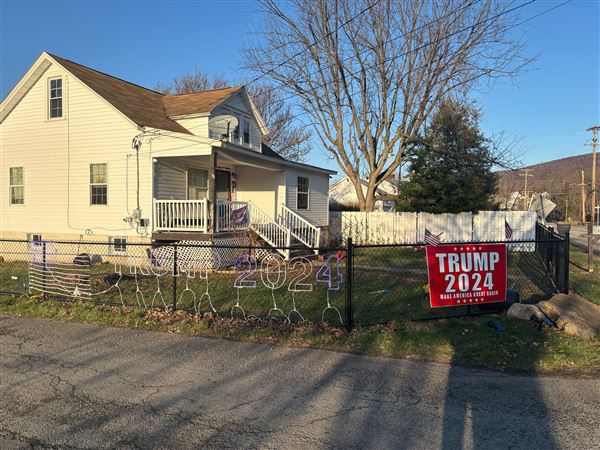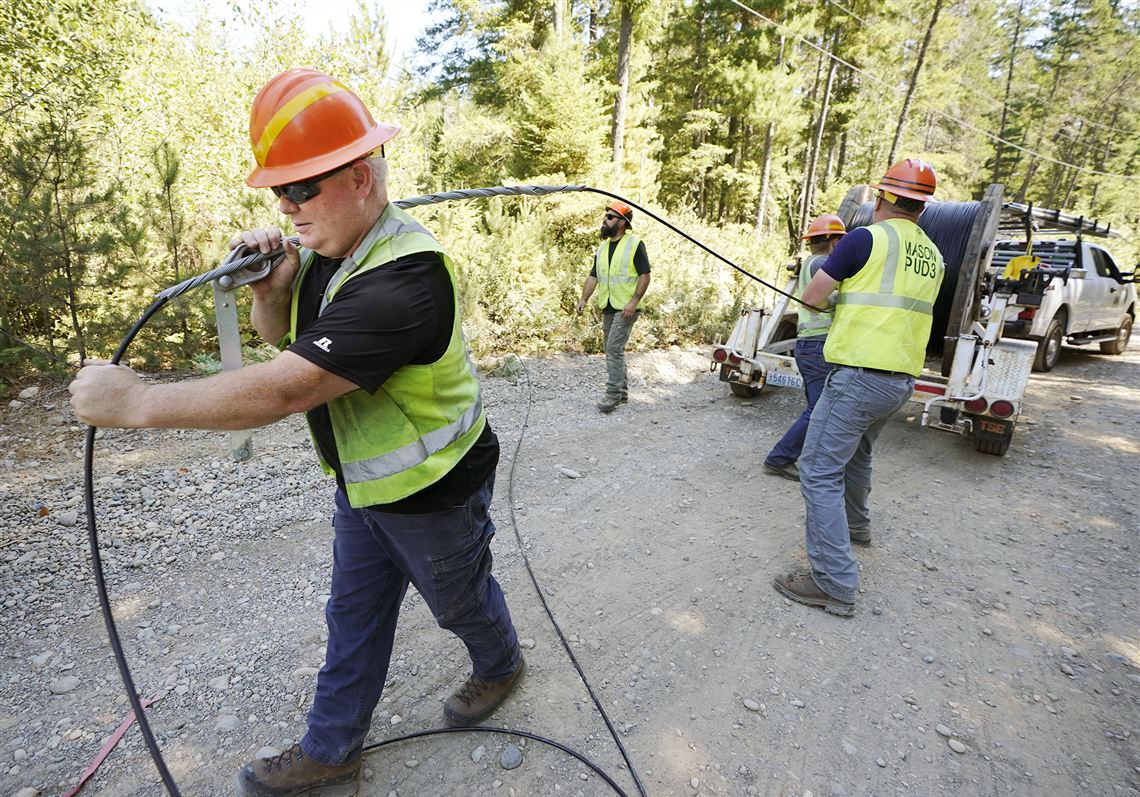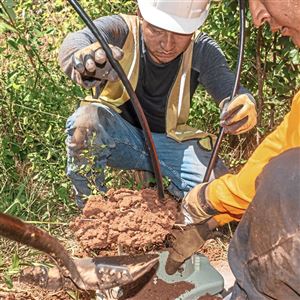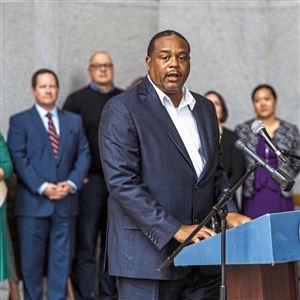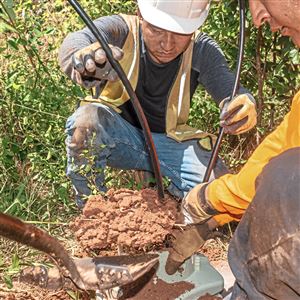Spotty internet? Do something about it now.
The Federal Communications Commission, the agency that’s mapping internet availability in every corner of the U.S., is accepting public comment on the accuracy of its most recent map revision, which was released Nov. 18. The maps will determine where billions of dollars will be spent in the coming years to improve broadband speeds and access — a sore thumb in rural areas long overlooked by internet service providers.
Here’s the hitch: telling the FCC about inadequate internet service — a topic which is open for public comment before Jan. 13 — requires robust internet service. No problem if you have a good connection. Not so good if you don’t, like many small towns in Pennsylvania.
That means just that much more pressure on governmental bodies of all sizes to jump on the issue as quickly as possible or risk losing out.
“Multiple counties, regions and even the state are going to be issuing guidance for the public and go in and challenge the maps,” said Jeremy Jurick, national broadband services director at Michael Baker International, the Downtown-based broadband consultant to three Western Pennsylvania counties. “If you want to have an impact on funding, you want to get your comments in by Jan. 13.”
Mapping internet dark spots in the U.S. is a big job that’s happening at warp speed.
Using the latest FCC maps, the National Telecommunications and Information Administration will begin awarding $42.45 billion in Broadband Equity Access and Deployment program funds by June 30 to areas with the poorest access. That has sparked a gold rush in many counties to document internet speeds and availability.
Using its own map of homes and businesses with inadequate internet access, for example, New York submitted a bulk challenge in October for more than 31,000 homes and businesses with poor or missing internet access that were absent from FCC maps. Mr. Jurick said it’s too early to conclude anything about the accuracy of the latest FCC maps for Western Pennsylvania.
The broadband deployment money, which is part of $63.2 billion contained in the Infrastructure Investment and Jobs Act of 2021, will be used for broadband planning and to buy the necessary fiber and infrastructure to promote adoption.
“For years, we’ve struggled to determine the exact contours of the digital divide,” Alan Davidson, assistant secretary of commerce for communications and information at the Commerce Department, said in a prepared statement.
“The FCC’s new map provides the most precise assessment to date of internet haves and have nots. This map is just a first draft so we encourage consumers, companies and government leaders to dive into the data and give feedback to the FCC.”
The Federal Communication Commission’s maps that show broadband availability will be revised continuously through summer with input from consumers, businesses and others with the latest version being used to target government funding to areas with poor or absent service.
That’s not much time for information-gathering in places like Fayette County, where only a week ago the commissioners began asking residents to report broadband connectivity issues through an online survey.
“Our residents’ participation is key to unlocking access to unprecedented funding opportunities that have recently become available,” Commissioner Dave Lohr said in a prepared statement. The online survey is available at www.ConnectFayettePA.com.
To encourage more people to take the time to participate, those filling out the survey will get a chance to win more than 200 items emblazoned with the Fayette County logo. The Fayette County Chamber of Commerce is sponsoring the drawing.
Fayette County has a population of 129,274 and 22% of households are not connected to the internet, according to the National Telecommunications and Information Administration.
In a master plan adopted Nov. 18, the newly formed Pennsylvania Broadband Development Authority reported that at least 2.6 million Pennsylvanians living in 1.3 million households do not have internet access or the skills to use technology, which has become a mainstay in telehealth, education and employment. Moreover, 1.6 million households in the state — 31.2% of the total — do not have a computer and smartphone, ranking the state 34th lowest in the U.S. for internet device ownership.
Venango County retiree John Ferketic said he has put up with crawling internet speeds for years — and his elected officials have ignored his complaints. The FCC map of his home along the scenic Allegheny River valley indicates the area is well served with broadband. Mr. Ferketic disputes that.
“That’s totally incorrect, grossly wrong,” he said. “How can these politicians ignore this?”
Mr. Ferketic has been unable to fix the mistake on the FCC’s website: his connection timed out because the webpage couldn’t load fast enough.
Instead of the three internet service providers that the FCC says serve the heavily wooded area of Kennerdell where Mr. Ferketic lives, he said he can only get on the internet through DSL, an older, copper wire technology that providers have begun phasing out. His speeds of 2.9/0.7 megabits per second of data are a fraction of the 25/3 mbps speed the FCC website says is available at his home.
‘We’re making progress’
Jill Foys, who lives in tiny Lickingville, northern Clarion County, which had its own post office until 2011, found the latest FCC maps remarkably accurate in showing the fiber optic internet service available “deep in the woods” where she lives along a three-mile road.
“That kind of impressed me,” said Ms. Foys, who is executive director of Northwest Pennsylvania Regional Planning and Development Commission, an Oil City-based nonprofit that represents eight rural counties in government matters. “I was really pleasantly surprised.”
The Northwest commission has been coordinating efforts by participating counties to get funding for broadband access from a variety of government sources. Among the counties represented by the commission, Forest and Warren were the least covered by broadband at only 5% and 14% respectively.
Not included in the coverage figures were expansion projects that have been completed since Aug. 1.
During the year ending July 31, there was a 22% increase in the square miles covered with broadband in the eight-county region, Ms. Foys said, including wireless internet access, which uses broadcast towers to relay signals rather than the more common fiber optic cable.
“We’re making progress,” she said. “We’re getting to places where we can’t go with traditional fiber.”
Not every county is moving at the same speed in documenting current broadband access and availability, information that can be used to challenge FCC mapping — and ultimately — maximize government funding.
“Those who have not moved fast up until this point are scrambling,” she said. “I guarantee they are rushing so they don’t miss out.”
Here’s the website where you can enter your address and see whether the FCC considers your home well served with broadband: https://www.fcc.gov/BroadbandData. At the site, you can also fix mistakes in the FCC coverage map by challenging the agency’s data.
Kris B. Mamula: kmamula@post-gazette.com or 412-263-1699
First Published: November 27, 2022, 11:00 a.m.
